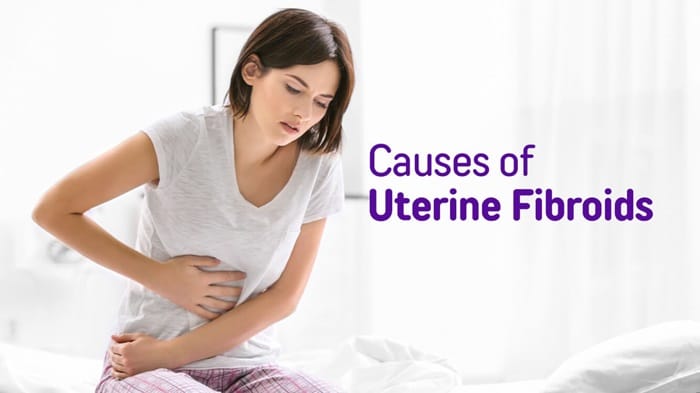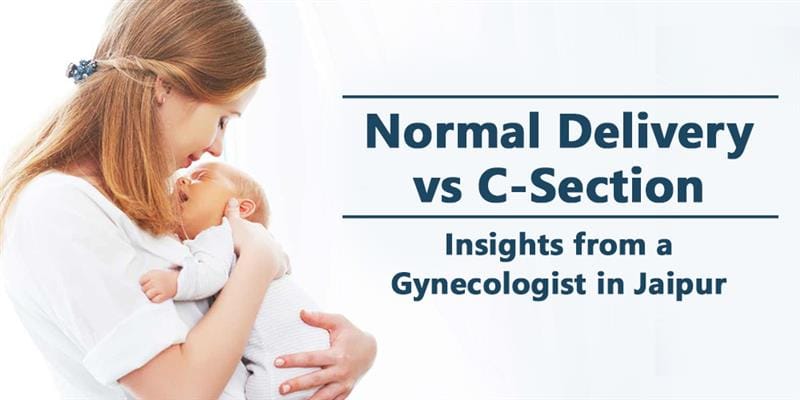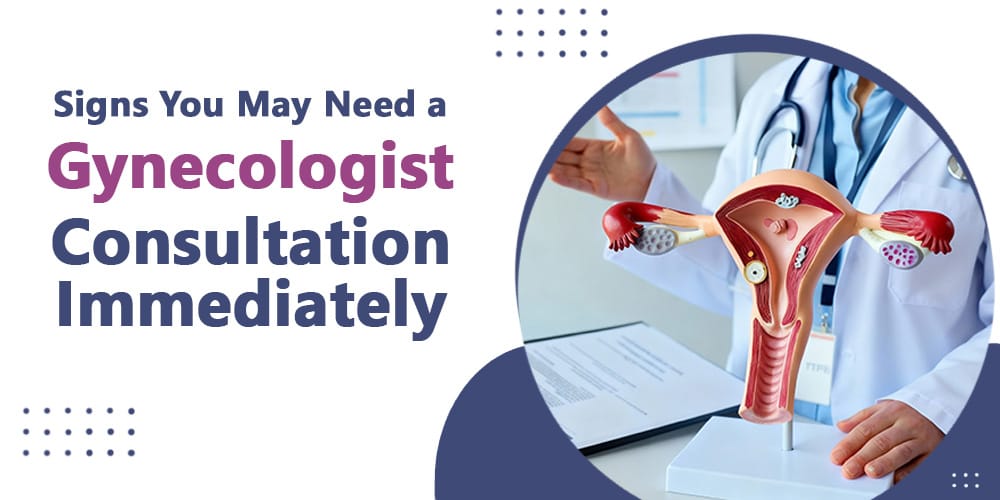Are fibroids causing uncertainty or worry in your pregnancy journey? This benign growth in the uterus, known as fibroids, often raises questions and concerns; therefore, grabbing complete clarity regarding these lumps in the uterus is essential!
In this blog below, I, Pankhuri Gautam, an expert laparoscopic surgeon in Jaipur, will assist you with expert details and insights regarding fibroids, detailing all about these non-cancerous lumps and how whether or not these can affect you.
Fibroids can disrupt normal harmony within the uterus, and hormonal changes, genetics, or various other factors play a significant role in this. Fibroid growth during the initial stages shows no symptoms, and it’s only in the later stages they cause heavy menstrual bleeding, pelvic pain, and fertility challenges.
Unaddressed fibroid symptoms for a long time can pose risks during pregnancy or when trying to conceive. Let’s get into the details of fibroid causes, risks and symptoms in the sections below to know more!
Fibroids Symptoms –
The symptoms of fibroids can vary among individuals, and some women may experience no symptoms at all. However, when symptoms do occur, they may include:
- Heavier or prolonged menstrual bleeding than usual, often leading to the need for frequent pad or tampon changes. Some may also experience menstrual periods lasting longer than a week.
- Persistent dull or sharp pelvic pain or discomfort. Fibroids can cause a feeling of fullness or pressure in the lower abdomen or pelvis.
- Increased frequency of urination, difficulty emptying the bladder, or urinary incontinence due to pressure on the bladder.
- Pain or discomfort during sexual intercourse, especially if the fibroids press on surrounding organs or the pelvic wall.
- Rarely, fibroids pressing on nerves in the lower back may cause backaches or leg pains.
- Larger fibroids can cause the abdomen to enlarge, leading to a feeling of fullness or bloating.
- Infertility or recurrent miscarriages, although this is less common.
Risks from Fibroids
- Fibroids located inside the uterine cavity or those that distort the uterine lining can cause heavy menstrual bleeding (menorrhagia), leading to anemia due to blood loss.
- Fibroids can sometimes interfere with fertility or cause complications during pregnancy, such as an increased risk of miscarriage, premature labour, or delivery complications.
- Depending on their size and location, fibroids may increase the risk of certain pregnancy-related complications, such as the breech position of the baby, placental abruption, or the need for a cesarean section.
- In rare cases, fibroids can outgrow their blood supply, leading to severe abdominal pain or fever, a condition known as degeneration.
How Common Are Fibroids In Pregnancy?
Uterine fibroids are the most common benign (noncancerous) gynecologic tumours and are found in 1–10% of women during pregnancy.
Can Fibroids Cause Problems During Pregnancy?
Yes, women with fibroids are more likely to have pregnancies with complications such as
- Fetal malpresentation (fetal body position that is not “head down”),
- Preterm delivery,
- Preterm premature rupture of membranes (rupture of water bag around the baby),
- Placenta previa ( a lower placenta ),
- Placental abruption (painful separation of placenta before delivery),
- Cesarean delivery,
- Severe postpartum hemorrhage (bleeding after delivery).
Babies born to women with fibroids may weigh less at birth than babies born to women without fibroids. According to the expert’s suggestions, staying connected with the doctor during pregnancy is always advised to ensure regular precautions and safety for a happy and healthy pregnancy journey.
What Causes Fibroids?
The exact cause of fibroids remains unclear, but several factors, as determined by the experts, which contribute to their development include –
- Hormonal Influence: Estrogen and progesterone, female hormones that regulate the menstrual cycle, may stimulate the growth of fibroids. These growths tend to enlarge during reproductive years when hormone levels are higher.
- Genetic Predisposition: A genetic component might be involved, as fibroids often run in families. If a woman’s mother or sister has fibroids, she might be more likely to develop them.
- Other Factors: Other factors such as obesity, diet (especially high in red meat and low in fruits and vegetables), early onset of menstruation, and vitamin D deficiency have been associated with an increased risk of fibroids.
- Race and Ethnicity: Studies suggest that fibroids are more common in women of African descent than in women of other racial groups.
- ECM: Extracellular Matrix (ECM) sticks cells together. ECM is increased in fibroids, making them fibrous, stores growth factors, and causes biological changes in cells.
Doctors also believe uterine fibroids may develop from a stem cell in smooth muscular uterus tissue. This single cell divides over time, creating a firm, rubbery mass distinct from nearby tissue. However, the growth of uterine fibroids may vary from slow to fast, and they can shrink or go away after pregnancy.
How Does The Fibroids’ Size, Number, And Location Influence The Obstetric Outcome?
In some studies, adverse outcomes were more common when fibroids were larger than 10 cm. However, it is also related to the location of fibroid in the uterus
Fibroids’ size, number, and location can significantly influence obstetric outcomes during pregnancy. Here are details for each factor:
Size of Fibroids:
- Small Fibroids: Usually, small fibroids don’t impact pregnancy. They might not pose significant risks and might not require intervention.
- Large Fibroids: Larger fibroids can obstruct the uterus, affecting the growth and position of the fetus. They might lead to complications such as preterm birth or the need for a cesarean section (C-section).
Number of Fibroids:
- Single Fibroid: A single fibroid might not necessarily cause complications. However, its location and size can influence the pregnancy.
- Multiple Fibroids: Having several fibroids can increase the risk of complications. The presence of multiple growths might elevate the chances of problems during pregnancy and delivery.
Location of Fibroids:
- Submucosal Fibroids: These fibroids develop inside the uterine cavity, affecting fertility and increasing the risk of miscarriage.
- Intramural Fibroids: Fibroids within the uterine wall can alter the shape of the uterus, potentially leading to issues like preterm labour or fetal malpresentation.
- Subserosal Fibroids: Positioned outside the uterus, these fibroids might not affect pregnancy unless they are large and exert pressure on nearby organs.
Can Fibroids Change During Pregnancy?
Yes. Approximately 60% of fibroids will grow or shrink by over 10% of their original size during pregnancy. Fibroids larger than 5 cm are more likely to grow during pregnancy. Most fibroid growth occurs in the first trimester. A considerable percentage of fibroids (approximately 40%) present in early pregnancy will have gone away, and another 75% will be smaller by the time the baby is born.
What Therapies Are Available For Fibroid-Related Pain During Pregnancy?
Fibroid-related pain occurs in 5-15% of patients and is usually well controlled with indomethacin (Indocin). Indomethacin should resolve or considerably improve pain within 48 hours, with minimal risk to the fetus. Tell your doctor if the pain has not improved after 48 hours of medical treatment.
Do Women Who Have Had A Myomectomy Need To Be Induced Or Have Cesarean Births?
The significant risk of pregnancy following myomectomy (surgical removal of fibroids) is uterine rupture either during or before labor. This risk will depend on the size of the uterine incision(s) and the size and number of fibroids removed. Because data are limited, it is difficult to make a clear recommendation regarding the appropriate route and timing of delivery for a pregnancy following prior myomectomy. Plans should be individualized based on the type and extent of the myomectomy surgery. However, after most myomectomies, a planned caesarean section is preferred.
Conclusion
Understanding fibroids, their causes, symptoms, and risks is important to keep a watch on women’s health, especially during pregnancy.
If you think you might have fibroids or notice any of the symptoms we talked about, it’s a good idea to see a doctor. Dr. Pankhuri Gautam in Jaipur can help with more information and advice that’s right for you. Getting help early and having a doctor who understands can make dealing with fibroids easier.
Connect with the expert gyno in Jaipur now to know more!






